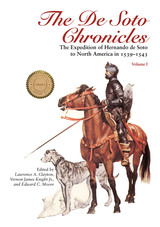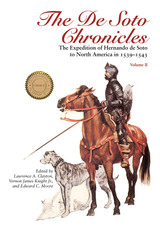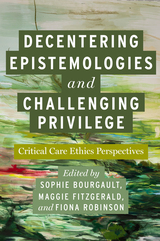113 books about Demography and 4
start with T
113 books about Demography and 4
113 books about Demography
4 start with T start with T
4 start with T start with T
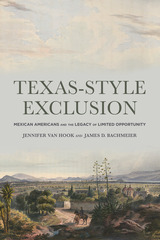
Texas-Style Exclusion
Mexican Americans and the Legacy of Limited Opportunity
Jennifer Van Hook
Russell Sage Foundation, 2024
While Americans largely support legal immigration, this support is conditional on the basis that immigrants do not make use of public assistance. Previous generations of immigrants, such as European-origin Industrial Era immigrants, came to U.S. impoverished, worked hard, and achieved the American Dream seemingly on their own. Mexican immigrants, the nation’s largest contemporary immigrant group, are often viewed with suspicion and are accused of being dependent on the government and refusing to integrate into American society the “right way.” In Texas-Style Exclusion, sociologists Jennifer Van Hook and James D. Bachmeier investigate such claims by comparing how American society has responded to different groups of immigrants over time.
Drawing on census and archival data on the quality of public schooling, Van Hook and Bachmeier find that Industrial Era European immigrants, who were primarily located in the northeastern U.S., benefited from programs and policies championed by the Americanization and Progressive movements. The Americanization movement sought to help acclimate new arrivals and transform “foreigners” into “Americans” by providing night school programs to promote civic integration and basic education, as well as other services. The Progressive movement, which aimed to improve education, work, and health conditions, sought to expand investment in public schools and make primary and secondary schooling mandatory, which kept working class children in school as opposed to entering the workforce. This access to education allowed for integration and astonishing intergenerational mobility.
Mexican immigrants in the 1920s and 1930s, the majority of whom resided in Texas, had radically different experiences from their European counterparts. Mexicans in Texas were subjected to racism, segregation, labor exploitation, and intentional school failures. This resulted in tremendous generational disadvantage that persists to the current day. Mexicans from this cohort who left Texas for states with strong Americanization and Progressive movements saw improved educational outcomes and integration. Additionally, Mexicans who immigrated after the Civil Rights Movement saw significantly greater inter-generational mobility and educational attainment than earlier cohorts due to the protections provided by civil rights laws. Van Hook and Bachmeier conclude that whether one is optimistic or pessimistic about the integration of Mexican Americans depends on when and where one looks.
Texas-Style Exclusion is an engaging examination of policies and practices that have been glossed over and forgotten that promoted mobility and integration for certain immigrant groups and impeded them for others.
Drawing on census and archival data on the quality of public schooling, Van Hook and Bachmeier find that Industrial Era European immigrants, who were primarily located in the northeastern U.S., benefited from programs and policies championed by the Americanization and Progressive movements. The Americanization movement sought to help acclimate new arrivals and transform “foreigners” into “Americans” by providing night school programs to promote civic integration and basic education, as well as other services. The Progressive movement, which aimed to improve education, work, and health conditions, sought to expand investment in public schools and make primary and secondary schooling mandatory, which kept working class children in school as opposed to entering the workforce. This access to education allowed for integration and astonishing intergenerational mobility.
Mexican immigrants in the 1920s and 1930s, the majority of whom resided in Texas, had radically different experiences from their European counterparts. Mexicans in Texas were subjected to racism, segregation, labor exploitation, and intentional school failures. This resulted in tremendous generational disadvantage that persists to the current day. Mexicans from this cohort who left Texas for states with strong Americanization and Progressive movements saw improved educational outcomes and integration. Additionally, Mexicans who immigrated after the Civil Rights Movement saw significantly greater inter-generational mobility and educational attainment than earlier cohorts due to the protections provided by civil rights laws. Van Hook and Bachmeier conclude that whether one is optimistic or pessimistic about the integration of Mexican Americans depends on when and where one looks.
Texas-Style Exclusion is an engaging examination of policies and practices that have been glossed over and forgotten that promoted mobility and integration for certain immigrant groups and impeded them for others.
[more]
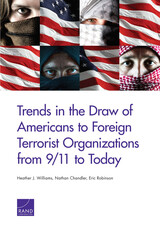
Trends in the Draw of Americans to Foreign Terrorist Organizations from 9/11 to Today
Heather J. Williams
RAND Corporation, 2018
The Islamic State of Iraq and the Levant (ISIL) has recently been more successful than al Qaeda in gaining U.S. terrorist recruits. The authors undertake a demographic profile of individuals drawn to foreign terrorist organizations and find that the affiliates average terrorists recruited by ISIL is younger, less educated, and more likely to be African American/black or Caucasian/white and a U.S.-born citizen.
[more]
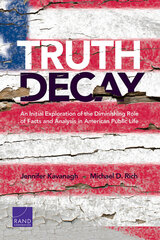
Truth Decay
An Initial Exploration of the Diminishing Role of Facts and Analysis in American Public Life
Michael D. Kavanagh
RAND Corporation, 2018
Political and civil discourse in the United States is characterized by “Truth Decay,” defined as increasing disagreement about facts, a blurring of the line between opinion and fact, an increase in the relative volume of opinion compared with fact, and lowered trust in formerly respected sources of factual information. This report explores the causes and wide-ranging consequences of Truth Decay and proposes strategies for further action.
[more]
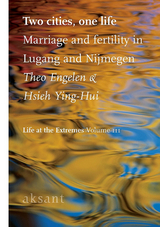
Two Cities One Life
The Demography of Lu-Kang and Nijmegen, 1850-1945
Theo Engelen and Hsieh Ying-Hui
Amsterdam University Press, 2008
Historical processes are the result of the behavior of countless individual actors. In this book, therefore, the authors compare the demography of the Taiwanese town Lugang and the Dutch town Nijmegen using data on the lifes of thousands of their inhabitants. The period covered is approximately 1850 to 1945. First, the standard demographic rates on nuptiality, fertility and mortality are calculated to test the Malthusian predictions on a so called ‘positive’ and a ‘preventive’ demographic regime. Next, the authors try to disentangle the individual rationality behind aggregated measures in order to find out how the inhabitants of the two towns used the one life they had. Unaware of each others existence, the people living in Nijmegen and Lu-kang had more in common than one would expect given the huge cultural differences.
Two cities, one life is the third volume in the series Life at the Extremes: The Demography of Europe and China, edited by Chuang Ying-chang (Academia Sinica, Taiwan), Theo Engelen (Radboud University Nijmegen, the Netherlands), and Arthur P. Wolf (Stanford University, U.S.A.).
Two cities, one life is the third volume in the series Life at the Extremes: The Demography of Europe and China, edited by Chuang Ying-chang (Academia Sinica, Taiwan), Theo Engelen (Radboud University Nijmegen, the Netherlands), and Arthur P. Wolf (Stanford University, U.S.A.).
[more]
READERS
Browse our collection.
PUBLISHERS
See BiblioVault's publisher services.
STUDENT SERVICES
Files for college accessibility offices.
UChicago Accessibility Resources
home | accessibility | search | about | contact us
BiblioVault ® 2001 - 2024
The University of Chicago Press


